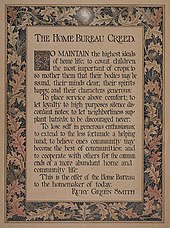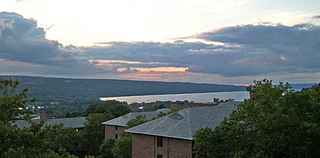
Cayuga Lake (,,) is the longest of central New York's glacial Finger Lakes, and is the second largest in surface area and second largest in volume. It is just under 39 miles (63 km) long. Its average width is 1.7 miles (2.8 km), and it is 3.5 mi wide (5.6 km) at its widest point, near Aurora. It is approximately 435 ft deep (133 m) at its deepest point, and has over 95 miles (153 km) of shoreline.
Cayuga Heights is a village in Tompkins County, New York, United States, and an upscale suburb of Ithaca. The population was 4,114 at the 2020 census.

The New York State College of Human Ecologyat Cornell University (HumEc) is a statutory college and one of four New York State contract colleges located on the Cornell University campus in Ithaca, New York. The College of Human Ecology is compilation of study areas such as design, design thinking, consumer science, nutrition, health economics, public policy, human development and textiles, each through the perspective of human ecology.
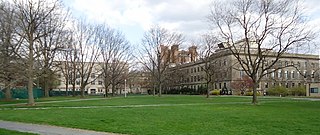
The New York State College of Agriculture and Life Sciences at Cornell University is a statutory college and one of the four New York State contract colleges on the Cornell University campus in Ithaca, New York. With enrollment of approximately 3,100 undergraduate and 1,000 graduate students, CALS is the third-largest college of its kind in the United States and the second-largest undergraduate college on the Cornell campus.
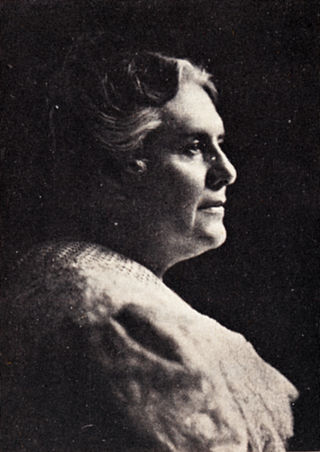
Anna Botsford Comstock was an acclaimed author, illustrator, and educator of natural studies. The first female professor at Cornell University, her over 900-page work, The Handbook of Nature Study (1911), is now in its 24th edition. Comstock was an American artist and wood engraver known for illustrating entomological text books with her her husband, John Henry Comstock including their first joint effort, The Manual for the Study of Insects (1885). Comstock worked with Liberty Hyde Bailey, John Walton Spencer, Alice McCloskey, Julia Rogers, and Ada Georgia as part of the department of Nature Study at Cornell University. Together they wrote nature study curricula to develop a curiosity for, and education about, the surrounding natural world. Comstock also was a proponent for conservationism by instilling a love and appreciation of the natural world around us.

John Henry Comstock was an eminent researcher in entomology and arachnology and a leading educator. His work provided the basis for classification of butterflies, moths, and scale insects.

Sage Hall was built in 1875 at Cornell University's Ithaca, New York campus. Originally designed as a residential building, it currently houses the Johnson Graduate School of Management.
The nature study movement was a popular education movement that originated in the United States and spread throughout the English-speaking world in the late 19th and early 20th centuries. Nature study attempted to reconcile scientific investigation with spiritual, personal experiences gained from interaction with the natural world. Led by progressive educators and naturalists such as Anna Botsford Comstock, Liberty Hyde Bailey, Louis Agassiz, William Gould Vinal, and Wilbur S. Jackman, nature study changed the way science was taught in schools by emphasizing learning from tangible objects, something that was embodied by the movement's mantra: "study nature, not books". The movement popularized scientific study outside of the classroom as well, and has proven highly influential for figures involved in the modern environmental movement, such as Aldo Leopold and Rachel Carson.

Vernon Lyman Kellogg was an American entomologist, evolutionary biologist, and science administrator. He established the Department of Zoology at Stanford University in 1894, and served as the first permanent secretary of the National Research Council in Washington, DC.
The Messenger Lectures are a series of talks given by scholars and public figures at Cornell University. They were funded in 1924 by a gift from Hiram Messenger of "a fund to provide a course of lectures on the Evolution of Civilization for the special purpose of raising the moral standard of our political, business, and social life", to be "delivered by the ablest non-resident lecturer or lecturers obtainable". The lecture series has been described as one of Cornell's most important of extracurricular activities.
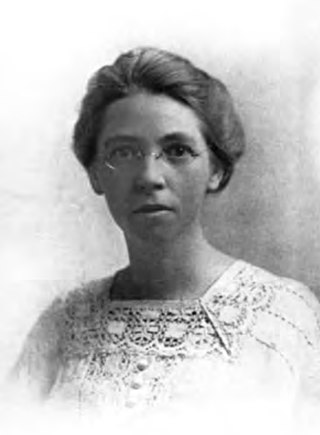
Edith Marion Patch was an American entomologist and writer. Born in Worcester, Massachusetts, she received a degree from the University of Minnesota in 1901 and originally embarked on a career as an English teacher before receiving the opportunity to organize the entomology department at the University of Maine. She became the head of the entomology department in 1904, and, despite misgivings from several male colleagues about having a female department head, she remained in this post until her retirement in 1937. Edith Patch is recognized as the first truly successful professional woman entomologist in the United States.

The Cayuga Nature Center (CNC) is an educational institution addressing nature and environmental issues. It is located on the west side of Cayuga Lake in Tompkins County, New York.
Elfriede Martha Abbe (1919–2012) was an American sculptor, wood engraver and botanical illustrator, often displaying nature and simple country living inspired by her Upstate New York home. A self-publisher, Abbe created numerous hand-printed books, which she printed on a printing press in her studio.
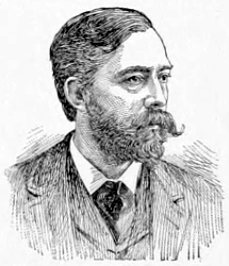
Simon Henry Gage was a professor of anatomy, Histology, and Embryology at Cornell University and an important figure in the history of American microscopy. His book, The Microscope, appeared in seventeen editions. In 1931, a volume of the American Journal of Anatomy was dedicated to Gage on the occasion of his eightieth birthday.
Alison Mason Kingsbury Bishop was an American artist who lived and worked in Ithaca, New York. Known professionally by her maiden name, her work features the landscapes of the Finger Lakes region and residential neighborhoods of Ithaca.
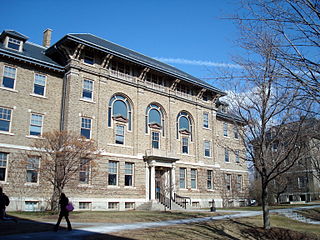
The Computing and Communications Center is a building of Cornell University, located in Ithaca, New York. It was built in 1911 and listed on the National Register of Historic Places in 1984. It was designed by Green & Wicks.
Julia Warner Snow was an American botanist and was known in the scientific community for her work as a systematic phycologist.
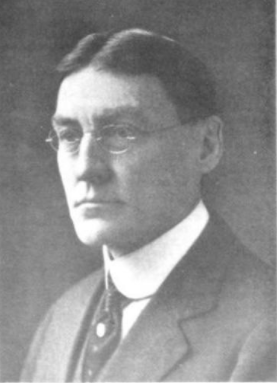
Glenn Washington Herrick was an American professor of entomology who worked at Cornell University.

Alice Blinn was an American educator, home efficiency expert, and magazine editor. Born in Candor, New York, she attended the New York State normal school and became a teacher. After teaching briefly, in 1913, she entered Cornell University and earned a degree in Domestic Science. While in school, she founded and managed the Cornell Women's Review. After graduation in 1917, she became a food conservation demonstrator for the New York Extension Service and then returned after a year to teach and manage the publications office for the Extension Service at Cornell.
